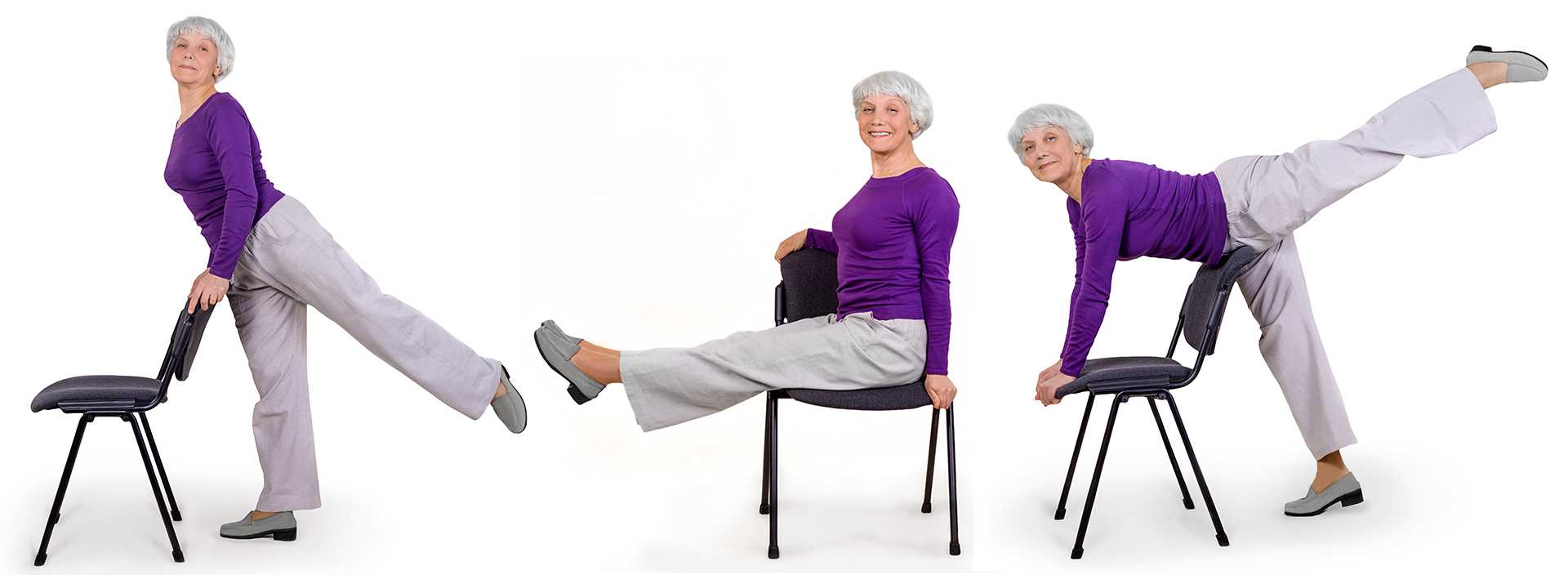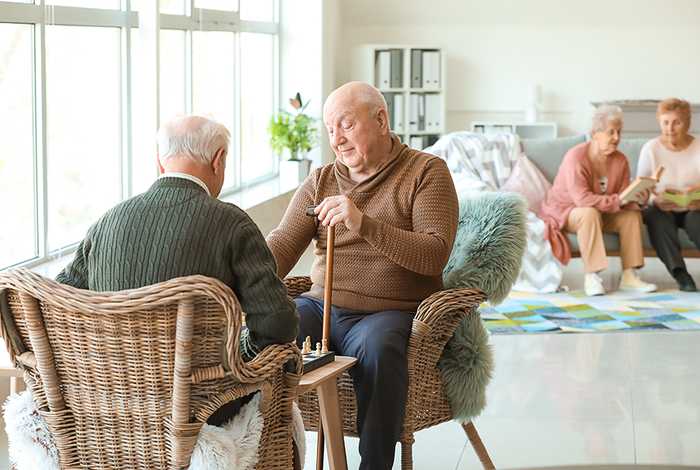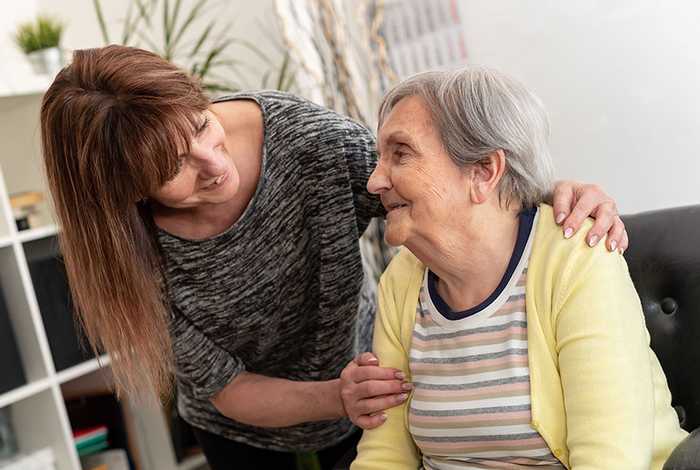Posted by Cameron Prendergast
Five safe and effective at-home exercises for fall prevention
Among the many challenges caregivers may encounter with an elderly loved one, maintaining a safe living environment can sometimes prove among the most daunting.

Preventable slips, trips and falls in a home or care facility can have the most lasting consequences for many seniors' physical and mental health. Practicing preventive exercise training can make a dramatic difference in alleviating fall risk and enhancing recovery when falls do occur.
This post will explore the causes and costs of falls and some comorbidities that can worsen falls. Finally, we'll offer five safe and effective at-home exercises for fall prevention that you can share with your parents, patients, residents, or other seniors in your life.
Common causes of falls for seniors
Fractures, immobility, and other adverse outcomes are some of the biggest problems facing seniors in the United Kingdom today, but many falls are preventable. According to the Office of Health Improvement and Disparities, "around a third of people aged 65 and over, and around half of people aged 80 and over, fall at least once a year."
Often some combination of issues contributes to an elevated risk of falls leading to fractures or other injuries. Seniors with high fall risk identified with:
- Low body weight, muscle wasting, weakness, and frailty
- Worsening balance or coordination
- Taking multiple medications, especially corticosteroids
- Poor diet, smoking, and excessive alcohol intake
Falls are also not limited to the home. Falls account for some of the most highly reported safety incidents in medical facilities in the UK. Regardless of the location or cause of the fall, prevention should be a primary concern not only for the elderly but also for their families, caretakers, and doctors.
Conditions that increase fall risk
Osteoporosis or weakening of bone tissue, nerve disorders, and frailty are some of the most notable risk factors for catastrophic falls.
Osteoporosis is particularly notorious for increasing the severity of injuries from falls, especially at the hip and wrist.
Frailty is common due to poor dietary patterns and a general decline in activity for many seniors.
Neuropathy related to type II diabetes is also a growing problem amongst older adults leading to movement dysfunction.
Benefits of exercise for strength and fall prevention
Aging leads to natural muscle loss, but regular exercise can manage these effects.
Weight-bearing activity, including walking, has well-documented bone-strengthening effects. In contrast, activities like tai chi, dance, or yoga can improve agility, balance, mobility, and spatial awareness, contributing to fall risk prevention.
Further, resistance exercise improves body composition to counter sarcopenia (or muscle wasting). Physical activity improves metabolic and cardiovascular function, promoting weight loss and other conditions, including heart disease.
Five simple at-home exercises for fall prevention
Now that we've established the importance of exercise to prevent falls at home and in care facilities, let's turn to a handful of helpful exercises to enhance strength, coordination, and stability.Each exercise serves one or more of these functions, and we encourage you to share them with people under your care and try them for yourself.
Static single leg balance
The first exercise can be used as a simple, repeatable balance test and a strengthening tool. Simply standing on one leg is one of the best ways to improve fall prevention gradually. It builds strength and stability while improving agility and coordination in the feet and ankles.Use a stable surface like a countertop for any balance practice exercise, and use supervision if needed.
You can also make this exercise more challenging by standing on a folded towel or closing one or both eyes as long as you feel secure.
"Funny" walks
Walking is a highly underrated form of exercise for many seniors.
While we're about to offer some variations, simply walking around the neighborhood is an excellent way to build bone density for many seniors.
If you've been walking for a while and want to add some variety, try some of these variations carefully.
- Walk on tiptoes to strengthen the toes and the arches of your feet.
- Try walking heel-to-toe as if you're walking a balance beam.
- Walk with a slightly wider-than-usual stance.
- Gently land your heel first while walking, putting more weight than usual in the heel of your shoe.
- Take longer than normal strides with each step.
Your feet and ankles are very versatile structures; try exploring how they might get you from place to place with some new patterns and movements.
Sit-to-stand squats
While your feet and legs do much of your balancing, your hips are the power center of your body. Since lack of movement can serve to both weaken and immobilize the hips, a simple practice of standing from a seated position is helpful for negating fall risk.
The primary goal of this movement is to stand up with flat feet, using your hands only minimally. Start by sitting upright in a chair with feet flat on the ground. Take a big breath in, and as you exhale, lean forward and stand up to a tall standing posture, then carefully return to your seat.
This exercise effectively strengthens and stabilizes the legs, hips, and core but also encourages using the lower body instead of unnecessarily pushing oneself up using upper body strength.
3-point reach
This dynamic exercise uses coordination and strength to build better balance. A chair or stable surface may aid balance support while learning this movement. We'll describe one side to be repeated on the other.
- Start with your weight on your right foot, lifting your left foot a few inches off the floor and your support at your right side.
- Imagine standing in the center of a clock face; bend your standing leg slightly, and reach forward as if you are trying to touch 12 o'clock with your left toes, then return to the center.
- Next, try to touch 9 o'clock, followed by 6 o'clock. Repeat three to five times before switching sides.
- Note: it may be helpful to place colored tape on the floor or carpet at each of the desired "times" on the clock.
Supported curtsy steps
One of the primary ways that many seniors tend to fall is by "tangling" their feet while walking. Practicing this movement in a controlled environment can be helpful to catch oneself if this should occur.
We encourage you to keep your hands on a stable surface or railing throughout this movement for added safety.
With hands on your support surface, cross one foot behind the other as if you were about to curtsy, bending both knees slightly. Return to the start position, then repeat on the other leg. You can do this exercise by crossing the lifted foot behind or in front of the standing leg as long as you feel stable.
Repeat eight to ten times on each leg.
Summary
If you or someone you know or care for struggles with balance issues, or has been diagnosed with osteoporosis, now is the perfect time to learn to mitigate fall risk.
Consult with your doctor before starting any new exercise program. Remember that it's never too late to begin taking the initiative — we can work together to lower fall risk in the UK, step-by-step.
If you are struggling with decisions about caring for an elderly loved one, Autumna can help. Autumna has the largest database of elder care providers in the UK, covering care homes, at-home care, live-in care and assisted living developments.
Autumna's directory is presented in an easy-to-navigate, easy-to-compare way but if you would like a headstart why not use this simple questionnaire to let Autumna's team of expert care advisers point you in the right direction.
ABOUT THE AUTHOR
Cameron Prendergast is a personal trainer, yoga instructor, and health coach. He specializes in injury prevention, functional movement, and strength training based on bodyweight movement to lessen the impact of the aging process. Cam is the managing editor at Physio Ed., a preventive health resource for older adults.
Receive a Free Care Provider Shortlist!
Let our expert team of advisers get your search off to a great start.
Tell us a little about your needs and we'll send you a bespoke shortlist of care providers! Click the button below to begin, it takes just a few minutes.
Other articles to read
Autumna Blog

Older Persons Care Advice
Care options for the elderly: What is right for you?
October 17th, 2025
Discover care options for the elderly that fit your needs, from home support to residential care, helping you plan confidently for the years ahead.

Older Persons Care Advice
Are next of kin responsible for care home fees
October 17th, 2025
Find out the truth about care costs. Are next of kin responsible for paying care home fees? Learn who pays, exceptions, and how to plan ahead.

Older Persons Care Advice
How to find a live in carer
October 15th, 2025
Discover how to find a live in carer who’s skilled, trustworthy and compatible, with practical tips on choosing the right support for your needs.






